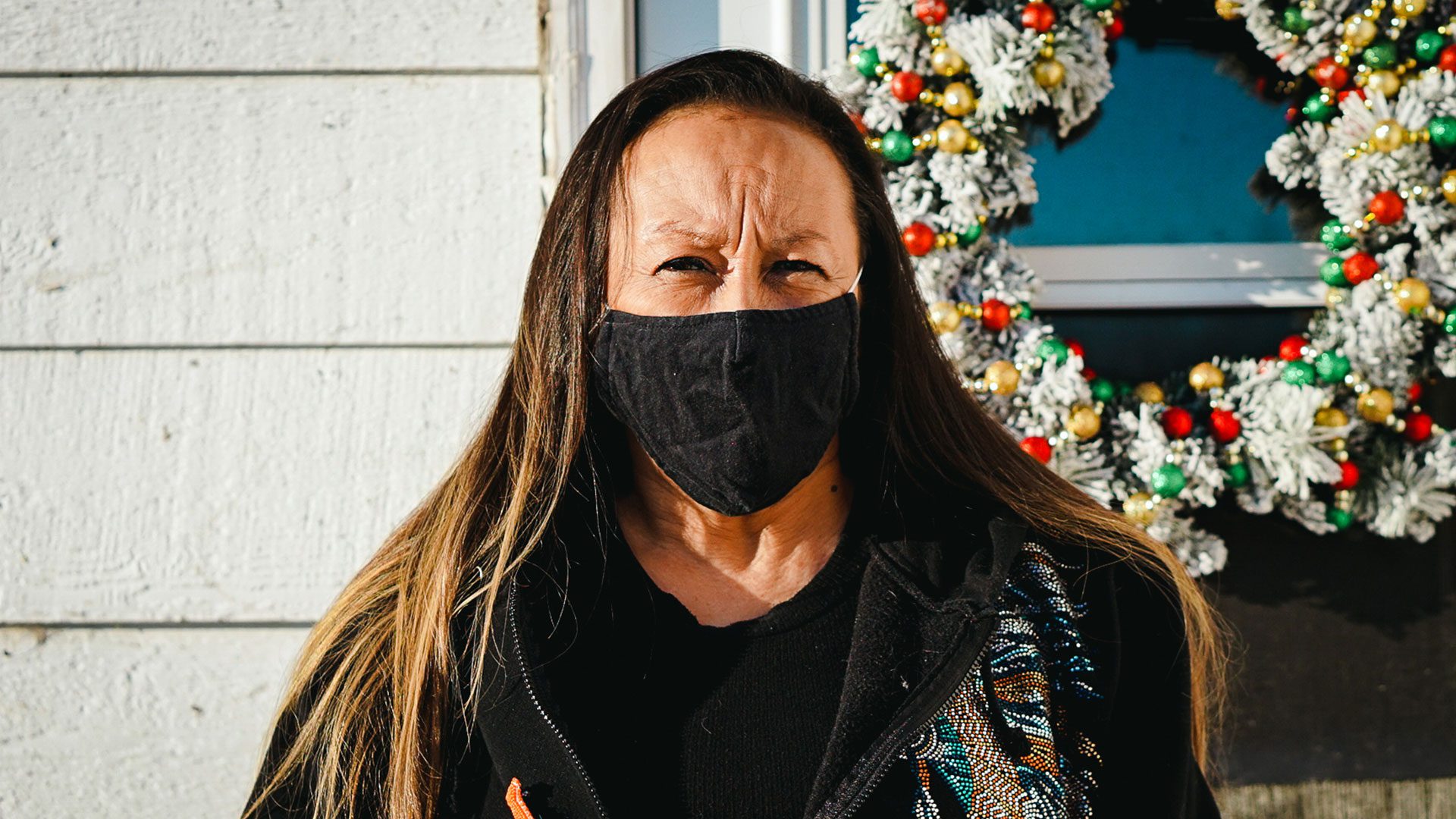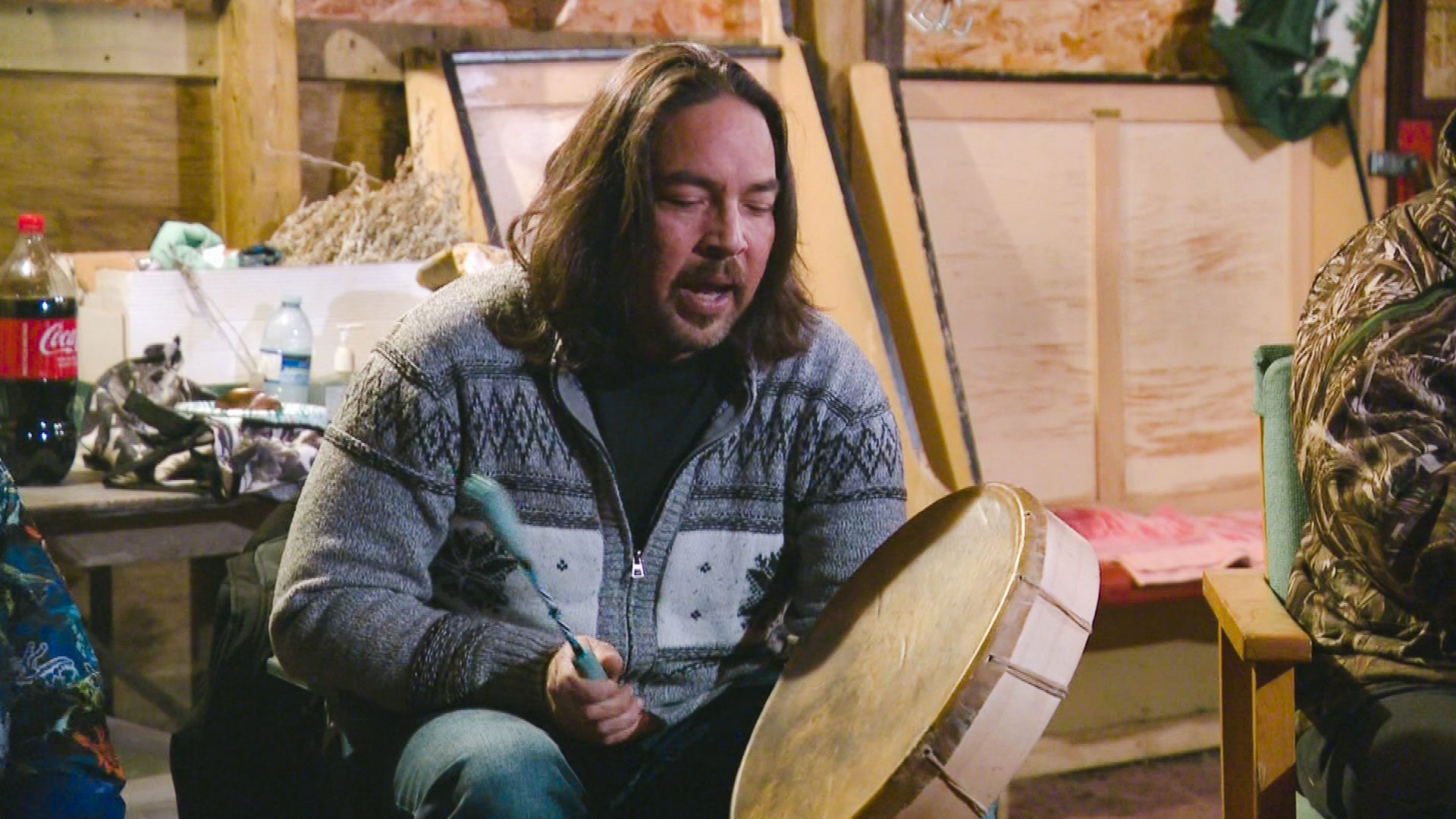Part 1 of APTN Investigates: Missing and Murdered Indigenous Men – Watch here
Sandy Banman packs her bag with neckties, traditional medicines, and a drum before meeting with her long-lost cousin.
The two cross Main and Higgins in Winnipeg, stopping just before the underpass ahead.
A match is lit, and they smudge before singing and drumming to honour missing and murdered Indigenous men and boys.
“Where I choose to hang the ties is entering the North End,” she said. “There’s a lot of murders happening to Indigenous men in that area.”
APTN Investigates identified more than 600 missing and murdered Indigenous men and boys in Canada since 1974.
A staggering number, each with its own story.
When the issue of murdered and missing Indigenous women first came to light, the Native Women’s Association of Canada released a study that found more than 500 missing and murdered Indigenous women and girls.
That number grew to 4,000 after the national inquiry into missing and murdered Indigenous women and girls released its report.
Now, families of missing or murdered men are calling for another inquiry – Banman is one of them.
“I don’t understand why nobody seems to be putting this at a higher level of grave concern,” she said.
The Métis woman has advocated for families of missing and murdered Indigenous women and girls for years, but she says Indigenous men are overlooked.
“It’s shocking to me, but maybe it’s because my son has passed away as a result of violence.”

Carl Banman was 31 years old when he went missing from Morden, Manitoba.
He was last seen leaving a residence in the spring of 2011.
“I got a message on May 22 during the day that Carl had not returned home that morning and was not seen by evening time and I became extremely concerned,” she said.
Banman said soon after a missing person’s report was filed the land and water searches began.
“I would walk around, just shake hands with people, go to the Salvation Army and put up posters and ask people, ‘have you seen my son?’” she said.
“It was three weeks that he was missing,” she said. “It’s an eternity when you’re looking for someone you love.”
Her son’s body was found near Dead Horse Creek, a few kilometres outside of Morden.
Banman has advocated for missing and murdered Indigenous women and girls for years, but she says now is the time to pay closer attention to Indigenous males.
“What about our fathers? What about our nephews? What about our uncles and grandfathers? They’re just as sacred,” she said.

Academics believe the number of missing and murdered Indigenous men and boys in Canada is much higher.
University of Saskatchewan professor, John Hansen, has studied the issue.
He says stereotypes have contributed to the rising number for decades.
“The familiar stereotypes of Indigenous males are that we are criminal types, gangsters, that we are violent people,” said Hansen. “[It] really desensitizes Canadians from looking at it.”
He says these stereotypes devalue Indigenous men and have a lasting impact on Indigenous youth.
“As a result of being bombarded with these stereotypes of Indigenous inferiority, Indigenous people internalize them,” he said.
The APTN investigation revealed the average age of Indigenous male who was victim of a homicides was 31 years old.
And the majority of the men identified were from the prairie provinces.
Eighteen homicides were the result of domestic abuse, and 63 homicide cases have gone cold.
Newspaper articles, partial police databases and public family statements were used to identify the men.
The APTN investigation was inspired by the NamUs database in the U.S.
The public database collects detailed information on missing persons and unidentified remains across the country.

Gina Settee lays tobacco down beneath a tree and says a prayer for her late son.
She remembers him as an outgoing and caring man, and the two often spent their mornings chatting over a coffee.
“If Bryer was down and out or just feeling like he needed somebody to talk to he’d tell me, ‘I need your wise words,’” she said.
“I really took pride in that. Because, you know, it’s not every day that especially a boy or young man can open up like that.”
Bryer Prysiazniuk-Settee was murdered on Feb. 8, 2017.
Settee says her son went out on Feb. 7, 2017, for his partner’s birthday.
“He was in a good mood, he was happy, jumped back in his cab and that was the last time I seen him,” said Settee.
Settee said the next morning she received a concerning phone call.
“I think it was 2:30 in the afternoon [when] I got a phone call and the person on the other end introduced himself as a homicide [investigator],” she said.
The three-week trial by jury found Christopher Brass guilty of second-degree murder.
Settee said it wasn’t until after the trial that she had considered accessing mental health services, but the services were unavailable to the family due to Prysiazniuk-Settee’s criminal record.
“I needed therapy for PTSD, and none of that was available to me.”
Settee hopes to see more attention paid to missing and murdered Indigenous men and boys.
“Indigenous men are missing or murdered every day, and you never hear about it on the news,” she said. “It’s like society doesn’t care.”
She added that the issues Indigenous men face are complex and need to be addressed at a national level.
“How do you expect somebody to live a good life if they were born to hate themselves because they’re brown or because they’re Indigenous?”

Jason Gobeil works as the Ohitika Ogichidaa (Warrior) Wellness Coordinator for the Dakota Ojibway Child & Family Services.
He runs a weekly Indigenous men’s group outside of Brandon, Man. He said it’s essential that men have a safe space to talk, listen and learn.
“We’re so remiss sometimes that men don’t want to talk, or men want to hold back their feelings or emotions,” he said.
He said he hopes to see more awareness around missing and murdered Indigenous men and boys created.
“The Beaded Tie Campaign was an initiative that we thought here at Ojibway Child and Family Services as part of the ongoing dialog for our murdered and missing Indigenous men and boys,” said Gobeil.
The new initiative seeks local Indigenous artists to bead neckties, the ties are symbolic of missing and murdered Indigenous men and boys.
“We’re truly honouring those warriors that are no longer here walking with us or that are still missing.”
According to Statistics Canada, Indigenous men and boys are seven times more likely to be murdered than non-Indigenous males and are three times more likely to be murdered than Indigenous women.
“Indigenous men are at the highest rate of being victims of homicide, where’s the support coming from the police?” said Gobeil. “Where is the inquiry delving a little bit more into the story behind the acts of crime?”












